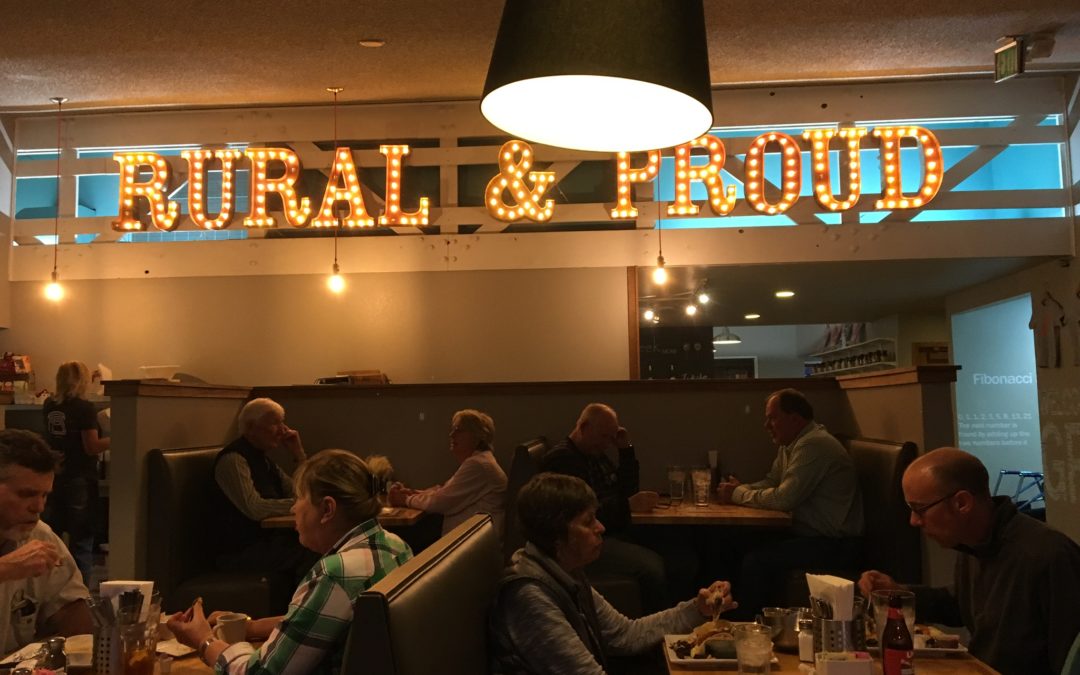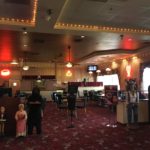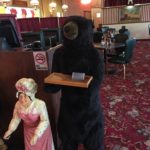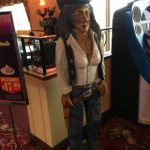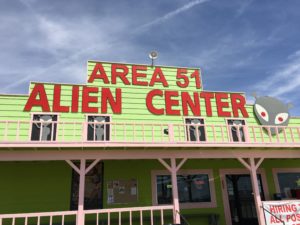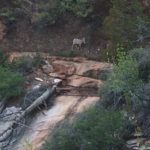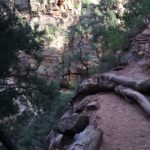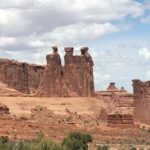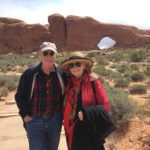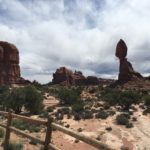April 18-20, Area 54, Zion and Arches national parks
At the Nevada casino where we had breakfast, we slipped past the all-night desperados, with cigarettes hanging from their lips, pumping away at the slot machines. We paused out front just long enough to read the plaque about legendary frontiersman Jack Longstreet, the “reluctant gunfighter.”
http://www.dustyway.com/2013/09/jack-longstreet-reluctant-gunfighter.html
- Breakfast at the Casino
- Waiting for customers
Driving as fast as we could, we skirted Las Vegas, aiming instead toward the promised land of Zion National Park. We made it through Area 54 without being kidnapped by aliens, but were stopped temporarily the world’s largest firecracker, set up by the side of the road. These folks will do anything to get a tourist to check them out and buy a t-shirt.
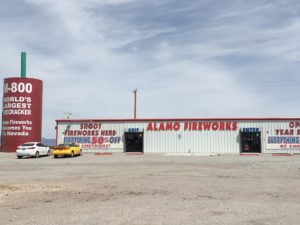
The world’s largest firecracker?
The sunset was starting to fire up the sky as we entered the narrow Zion park tunnel and parked by the Canyon Rim trail, where we hiked with wild mountain goats as night fell.
- Zion mountain goats
- More goats
- The canyon ridge trail at Zion
Zion’s gateway town of Springdale, UT was full of tourists willing to spend too much money, spoiling the local folk to a lifestyle that did not favor customer service. The brain-dead hostess at the crowded Spotted Dog Café unforgivably gave up our table while we were waiting for over an hour at the bar.

Our next stop was picked out on the map because it was on the way to Arches National Park. If Springdale was a tourist trap for people with too much money, we found Green River, UT to be an abandoned outpost wishing desperately to bring the tourists back. Folks here voted for Trump because they hoped he could might restore them to life. Even ghost towns looked more vibrant than this gauntlet of boarded-up gas stations, shops and motels. Finally we spotted our lighted motel at the far end of town. Its parking lot was full of pickups from the road maintenance crews who would also be spending the night there with us. It cost a third of what we had spent in Springdale, including a free breakfast with the road workers the next day.
For dinner, there was one take-it-or-leave-it option in town: the Tamarisk. They were thrilled to see us and showed us immediately to their best booth, overlooking the river. This brave place was filled with farmers and ranchers who had driven in from far away for a special night out.
We had seen their cattle and crops, which were hard-scrabble compared to the lush fields of California’s Central Valley. As we drove through the rugged, semi-arid terrain of Utah, I was beginning to understand the Sagebrush Rebellion, which surfaced first during the Reagan years, stirred by westerners from Utah, Wyoming and other non-California states. With so much of the West’s open land tied up in national forests, monuments and parks, ranchers felt the federal government had taken away their birthright.
California had the opposite situation: the federal government installed water projects on privately owned land. The desert bloomed, generating billions of dollars for corporate investors, including companies like Tenneco who had originally bought up the dry land for railroads and oil exploration. The Chandler family who owned the Los Angeles Times was still tied in to these secret land purchases and self-serving federal water subsidies when I joined the staff in 1975, but the newspaper under Otis Chandler was in the process of upgrading its ethics and quality, so I was able to write honestly about this entanglement without getting fired.
At the Tamarisk restaurant, John and I admired the “Rural and Proud” sign over the dining room. The middle-aged waitress, who couldn’t have been more pleasant, volunteered that these were hard times. She had advised her kids to go off to college, joining all the other young people who were leaving town. Even though her family had been there all their lives, her sister had decided recently she would have to close her beauty salon. The highway had been developed in another direction. The tourists had disappeared. Most people visiting Arches National Park now stayed in the more famous town of Moab.
We drove the next day through majestic Arches National Park, which like Zion and Bryce, was a natural Disneyland of improbable rock formations. John called this “God’s workshop,” full of behemoths and arches carved out of the red sandstone by eons of wild winds.
- The Three Gossips
- Desert behemoths
- God’s Workshop
At the Moab Diner for lunch, we celebrated this glorious landscape. John claimed it was my birthday so they gave me a free ice cream sundae. I felt guilty, but not too guilty to eat it, a week in advance of the actual event. No wonder I gained 10 pounds on this road trip!

